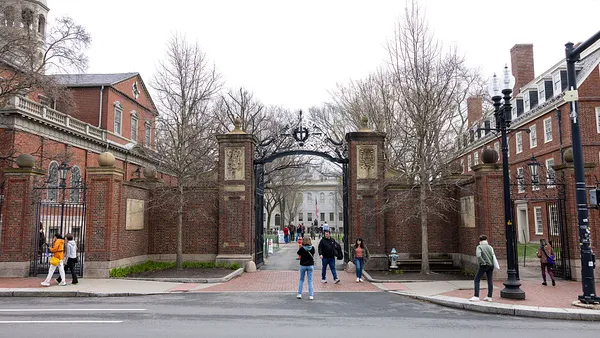Dive Brief:
- Starting Jan. 1, children born or adopted in Colorado through at least 2040 will be eligible to receive $100 in their 529 college savings account, The Colorado Sun reported.
- The state-run nonprofit college savings program, CollegeInvest, hopes to encourage more families to use the tax-advantaged accounts to save for their children's postsecondary education.
- Efforts like Colorado's, called First Step, are underway in cities and states nationwide as government leaders address concerns about college affordability. But participation in these still-new programs vary widely.
Dive Insight:
St. Paul, Minnesota, is starting the year in a similar fashion as Colorado. It is offering the families of newborns $50 toward a savings account run through the city's College Bound program, the Pioneer Press reported. And in Massachusetts, children born or adopted as of Jan. 1 were eligible to receive $50 toward a 529 college savings account. Through a similar program in Illinois, newborns will become eligible for $50 in college seed funding next year.
Although the amounts are small relative to the cost of attending college, these initiatives are a growing trend nationwide as cities and states offer families a cash incentive to start saving early for their children's college education.
Children from low- and moderate-income families with some money saved for college are more likely to attend and graduate, research has shown, and most states offer 529 savings plans. However, the programs are too new to test whether they're effective.
As with the latest programs in Massachusetts and Colorado, families must typically open a 529 college savings account within a limited timeframe in order for their children to access the funds.
But participation rates in such programs vary widely. A legislative summary of the potential effects of Colorado's program sets low- and high-end participation estimates at 2.5% and 52.5%, respectively, of the some 65,000 expected births in the state. The figures are based on uptake of earlier programs in Massachusetts and Rhode Island.
When the bill creating Colorado's program was signed last year, it had enough money to run for a decade at a 10% participation rate, The Denver Post reported.
While Colorado lawmakers say the state's program is more akin to Rhode Island's — which set the high mark for uptake — the summary notes that "participation rates for programs in other states more closely resemble those for the Massachusetts program."
As the cost of college has risen in the last decade, so too has the use of 529s.
As of June 2019, American families invested $352.4 billion in 529 savings plans, up from $133.4 billion in 2009, according to the College Savings Plans Network. However, during that period, the number of savings plans rose 39% to 14 million. Critics of the plans say the tax incentive they offer primarily favors wealthy families, and some say they aren't as widely used as they could be.
Notably, St. Paul's initiative eschews the state's existing 529 program partly because the task force that designed it was concerned about limited familiarity with and access to 529s, the Pioneer Press explained.
But 529s could attract more attention as a result of changes in how they can be used that were included in the spending bill approved by Congress late last month. In addition to helping front costs for postsecondary and K-12 education, the new law would let the funds be used for certain costs associated with participating in apprenticeships and to help pay down student loans.












